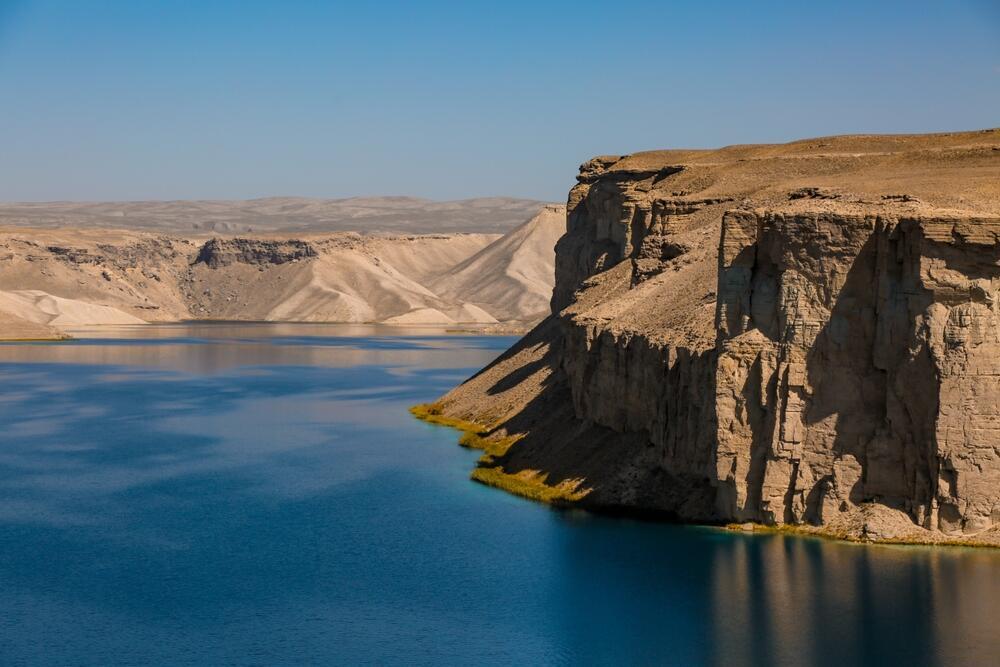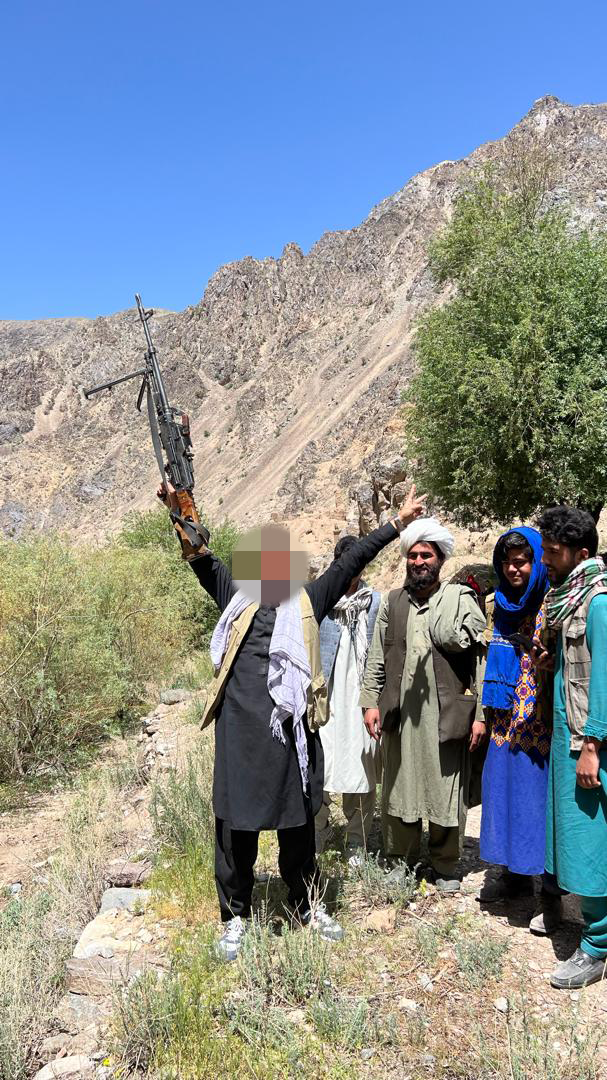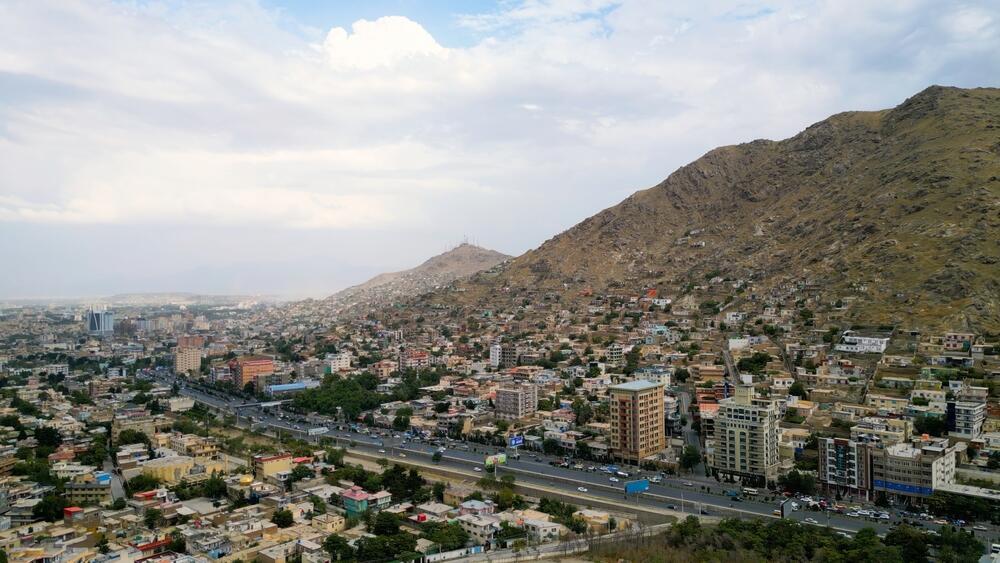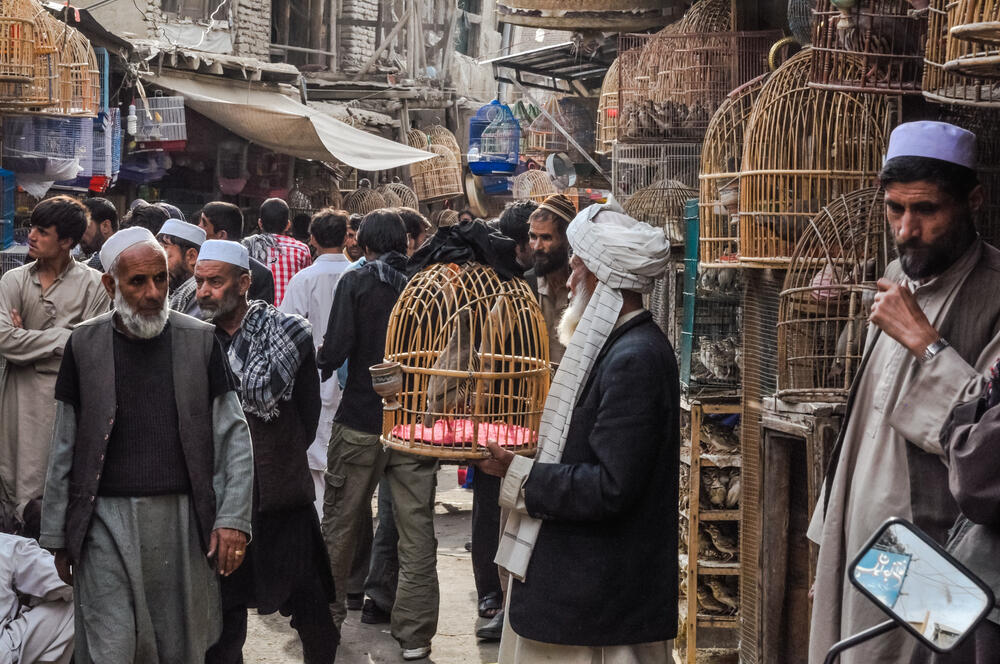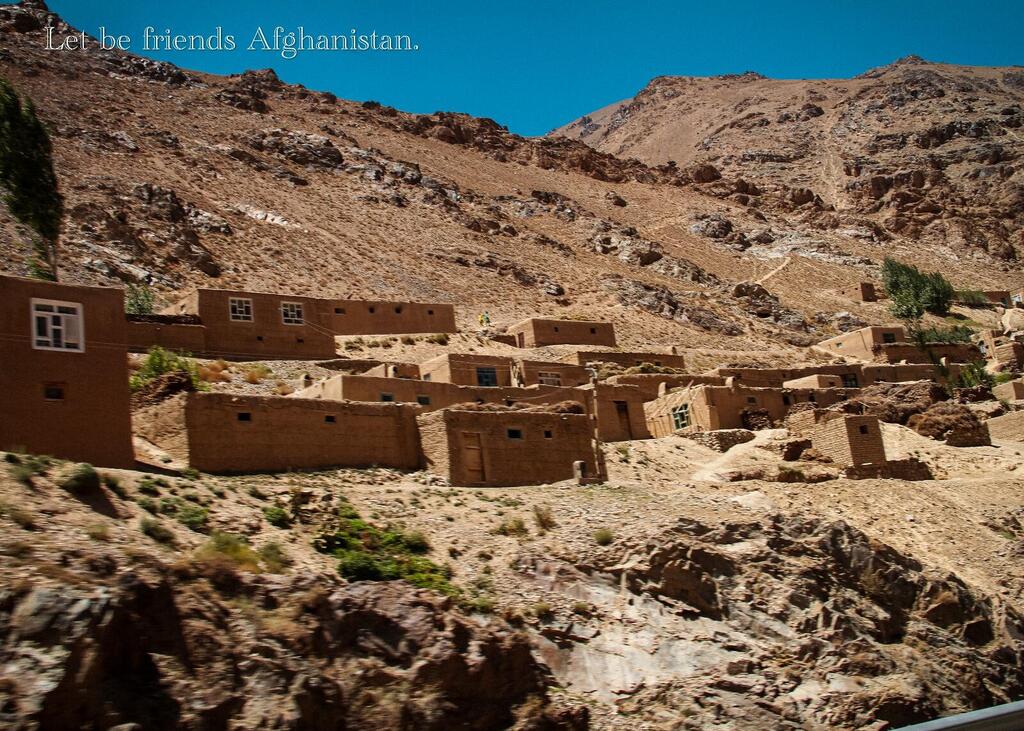Getting your Trinity Audio player ready...
David (pseudonym) is single, 50-year-old adventurer with a foreign passport who, for work purposes, visited Afghanistan sometime in the past year. He regales to Ynet his unusual trip to the Land of the Taliban.
“I’m a medical administrator specializing in operating field hospitals as part of “Doctors Without Borders,” says David. I also visited Afghanistan 11 years ago. I’ve treated Afghan refugees across the globe and, with the Red Cross, I’ve visited the notorious Guantanamo Bay Detention Camp. So, I’m familiar with the Afghan people and I wanted to see the tumultuous changes the country has undergone since the American withdrawal in 2021.”
Did your family in Israel know you were going to Afghanistan?
“I didn’t want to give them a heart attack, so I told the close family that I was going to the Gulf area, and that I would be out of contact due to meetings in remote areas.”
Did you conceal your Israeli identity?
“Obviously. I showed up with a new phone with no trace of Hebrew, and I had to make sure not to search for Ynet or WhatsApp friends in Israel. I’m used to it. This is what I did in Dubai when I was traveling on my European passport.”
Were you scared?
“My hosts, representatives of a foreign country, assured me that visiting Afghanistan today, under Taliban rule, is safer than it was when American forces were there, when there were Taliban terrorist attacks and there was crime on the streets. It’s relatively calm there now. I also don’t think they’d imagine that an Israeli would be so stupid as to go there of their own accord.”
What are the hotels like there?
“The hotels are just fine. They have regular bathrooms, and comfortable hygienic conditions for tourists. The local food is good and there are no cockroaches in the rooms. The locals generally don’t speak English. I think that anyone who spoke English and collaborated with the American occupation, either escaped or was murdered. The Russian occupation, however, means that some of the Taliban speak Russian.”
David says the bitter cold in the winter months came as a surprise. “It was -10°C. I didn’t know it would be that cold. I bought myself Afghan togas and wrapped myself in them. They’re like huge bed covers made of cotton and sheep’s wool, and they’re very warm”
What do they eat in Afghan restaurants?
“An amazing combination of central Asian, Indian, Pakistani and Persian cuisine. I loved their kebabs and rice, as well as their veal and lamb dishes. They eat well. I was sure to ask for my food not too spicy as they love their chili. The street food is also great, and I had no stomach trouble. The food in the best restaurant in town costs $7, and you can have a meal at an excellent restaurant for half that.”
13 View gallery


Rowzi Sakhi Shah-e-Mardan Mosque: Its courtyard is paved with desecrated tombstones of Taliban opponents buried beneath, which people now tread upon
“There’s no alcohol and no Coca-Cola as it's American. They have an Afghan brand called “Super Cola”, which is not as sweet or as carbonated, that I highly recommend. I didn’t see Afghan hashish, but everyone talks about Afghan opium. During the American occupation, it was widely grown, mainly for export. Now, under Taliban rule, getting involved with opium exposes you to the risk of the death penalty. I did, however, see lots of opium fields in the countryside.”
“The locals are nice to foreigners and always ask where you’re from. But the armed Taliban, who are on all the streets and roadblocks, could eat you alive. They’re Islamic extremists who view me as an infidel. At some checkpoints, I felt they were herding around me like hungry wolves. They’d told my guide that they really wanted to kill the infidel and get to Paradise, but that they would restrain themselves for fear of punishment. It was extremely unpleasant.”
“They’re the cruelest people on Earth. They stone women to death and murder in cold blood. The Taliban rules the country with an iron fist. Women are absent from the public domain, and the very few who are out, are covered up in bourkas. Their schooling ends in sixth grade and they’re forbidden to drive. Forced polygamy at a very young age means that suicide is widespread among young women.”
What attracted you to Afghanistan?
“It has lots of history, archeology, current affairs, and beautiful, untamed nature. Afghanistan is a vast country. Alexander the Great passed through there on his way to India over 2000 years ago. The Silk Road also went through. As a boy, I collected stamps from all over the world, including from Afghanistan. Maybe that’s what got me into discovering countries. I don’t like hackneyed kinds of trips. I wanted to see whether it’s like what you see on TV, so I went. I actually had fun, and I didn’t feel the adrenaline. I’m quite used to traveling under assumed identities in dangerous regions, and I don’t want the danger to prevent me from seeing wonderous things.”
Did you meet other Western tourists?
“Very few. I could count them on the fingers of one hand. I hardly saw Western aid workers either.”
Is there shopping?
“Obviously, there are no malls but they do sell ethnic embroidery, carpets, Afghan hats and sculpted stone. There’s no music, and dancing is forbidden. On the road, we’d sometimes listen to old local pop music from the time of the American occupation, and switch it off as soon as we got anywhere near a Taliban checkpoint. To be honest, the prohibition on music bothered me less as I’m a book guy. There were plenty of other prohibitions, though - mainly about photographing women and modest clothing.”
13 View gallery


A view from Afghanistan's Land of Fire, Nuristan: Taken from the country’s highest cricket field, among the highest in the world
What's the deal with LGBT in Afghanistan?
“It’s an extreme paradox. On the surface, homosexual relations between two adult men is as underground as it gets, and warrants the death penalty and complete family ostracization. That said, there’s a sick and repulsive aspect: As long it’s a minor, it’s not a problem. The Taliban can sexually abuse children on the streets, this is accepted in terms of local culture, but it’s supposed to stop as soon as the minor grows up and marries a woman.”
After much deliberation, David authorized us to publish excerpts from his personal travel journal, excluding details that might endanger the lives of people with whom he traveled.
Travel journal from Afghanistan - by David, assumed name
After the American withdrawal, Afghanistan was thrown back to the Stone Age, Medieval times or the start of the 20th century – depending on what field. The Afghan airline, for example, is private, on time and professional. They still have female flight attendants, but their planes are old and could be improved.
We land in a small, dirty, airport, that felt somewhat Soviet with an American facelift. At first glance, time has stood still since August 16, 2021, the bloody day on which the Americans left Afghanistan. I see the barbed wire through which soldiers’ babies were handed that day. There are also lots of signs up in English, as well as military equipment left behind by the Americans, such as APCs and unmanned planes, that have been transferred to the Taliban. This might sound familiar: the Americans believed that strengthening the Taliban after withdrawal and continuing funding projects would bring stability to the region.
I get my suitcase. My visa had already been issued in Dubai. After passport control by Taliban personnel, I see a big sign reading “I Love Afghanistan” and the “Super Cola” logo. Kabul, the capital, is huge, perhaps four times the size of Tel Aviv - and the Taliban are everywhere: Traffic wardens, security personnel at the entrance to sites, and policemen dispersed along the streets and across the entire public space. Most are illiterate and couldn’t read my passport or documents – a tangible manifestation of what happens after a religious revolution.
13 View gallery


The Tombs of Kings overlooking Kabul: Riddled with bullet holes from wars, the tombs face a stadium once used for public executions
Last time I was in Afghanistan, a decade ago during the American occupation, being out during the day, and more so at night, was very unsafe. There were lots of bandits on the road and the police were corrupt. There was also the very real danger of terrorism by the Taliban. Today, after regime change, I felt much safer on the streets. Taliban, stationed at 20-meter intervals, keep order. The vast quantity of guns that were in public hands, have been collected and who’d dare steal when the punishment is having your hand chopped off?
The few tourists that make it to Afghanistan may wander the streets on their own a little, mainly near the hotel. If they’re not accompanied by a local guide to explain what they’re doing and help shoo away beggars and present documents, they’ll be questioned by the Taliban – but it’s not a genuine danger.
We drive to the fortified hotel in the new city on Chicken Street. My first thought was that if the police station in Sderot had looked like this, it might have been saved from destruction on October 7. Kabul’s new city separates the Hazara Quarter, the site of the Taliban terrorist attack, and the city center and the closed-off Muslim Brotherhood quarter where former president Hamid Karzai lives.
Kabul is very colorful. In addition to the Pushtans who rule Afghanistan, there’s a broad variety of ethnic groups including the Baloch, the Kyrgyz, the Kazakhs, Uzbeks and more. Some cars have left-wheel drive, others right, and not all have license plates.
13 View gallery


Outskirts of the Blue Mosque in Mazar-i-Sharif: A site sacred to all Muslims and now a regional hub for pro-Palestinian support
One must for a tourist to Kabul is to visit the tombs of the ancient kings in an unfinished, partly bullet-ridden, mausoleum. On our way to the historic building, we walk through an old cemetery where I notice ancient graves with Hebrew inscriptions. So as not to raise suspicion I, obviously, don’t tell my companions. In the past, Kabul had a splendid ancient Jewish community. Today, there are no Jews left in Afghanistan.
Another prominent tourist site in Kabul, with a dubious reputation, is the Soviet stadium. Mass executions were carried out here. It’s now covered with anti-American and anti-Soviet graffiti, the prevailing motto being “First Islam, then Afghanistan.” Another Israeli point of interest in Afghanistan, coming as no surprise, is a model of the Al Aqsa Mosque set up after October 7.
13 View gallery


View from Alexander the Great’s Fortress in Balkh, near Mazar-i-Sharif, Northern Afghanistan
The Taliban are wild beasts on a leash. They truly believe that if they murder a member of the Shiite (Hazara) minority every day, they’ll get to Paradise. Thanks to the American withdrawal, they believe the whole world is moving over to Islamic rule. At some checkpoints, they said they had to overcome the urge not to shoot me, the infidel, as killing a Western infidel was their key to paradise.
In Kabul, we also visited the famous bird market. The Afghans’ favorite pets are songbirds, rabbits, wild chickens and shepherd dogs that do well as guard dogs. It’s a very cheap country. Nearly everyone wears the traditional Afghan togas and Pushtan or Turkmen hats.
On another day touring Kabul, we saw some Turkish-Italian-style mosques and terraced gardens under renovation from the damage from the war. We also saw the very spot on the foul Kabul River where an Afghan-Tajik girl was murdered on grounds of desecrating the Quran. She had, in fact, come to the mosque to learn about Islam, and was unresponsive to the mullah’s advances, who then falsely accused her. Police officers were injured trying to stop the incited mob, and she was dragged into the river and murdered. The criminals were imprisoned and - mullah included - released a few years later. A sad memorial stands at the spot.
From Kabul, we took an internal flight north which left 45 minutes late, to Mazar-i-Sharif, the northern front’s former capital, then supported by the Americans. Here, Turkey does its best to protect the Turkish-speaking minority and there are border crossings for goods from Uzbekistan, Tajikistan and Turkmenistan.
13 View gallery


The missing Buddhas in the Bamiyan cliff: Destroyed with dynamite by the Taliban just days before the 9/11 attacks and the US invasion
Mazar-i-Sharif is beautifully lit up at night but, like all cities in Afghanistan, dead after dinner as the Taliban prohibits playing music. Mazar-i-Sharif is the impressive Hindu-Kush Mountain range’s northern passage, and the Blue Mosque and the “Tomb of the Saint” with new signs supporting Hamas, are prominent tourist sites. I also met, for the first time, a British woman tourist, angry with a Taliban man who wouldn’t let her into the site. She lost her temper and was cursing the guard. Her guide stopped her in time and got her away lest she be dragged off to an Islamic court.
I liked the lovely carpet market in Mazar-i-Sharif, although I did find some of the designs somewhat repulsive – like the pictures of guns that defeated the Soviets and the Americans. The most popular design is that of the “Falling Afghans” – those poor civilians who tried fleeing Afghanistan the day America withdrew, holding on to the airplane wheels and falling to the ground from great heights.
The next day, we visited the cities of Balkh and Samangan. On the way, we saw oxen plowing, nomads’ tents and children playing cricket. Alexander the Great stopped here 2,400 years ago en route to India. There’s a huge wall and watchtowers and an acropolis-turned-garbage-dump.
The next day, we went to Bamyan, the city of the famous Buddhas, destroyed with explosives by the Taliban 23 years ago. The snow and traffic meant we couldn’t get to the mountain pass breached by the Soviets, so we took the traditional 12-hour journey along the Silk Road. Along the river, we also saw Hazara children fishing with individual fishing nets and playing cricket and volleyball, as well as a host of hairy two-humped camels transporting nomads’ tents and wares.
We went into the village, straight to a good restaurant. There were lots of children selling incense and begging. The hotels are strategically placed in front of the Buddha caves amd cliffs. Bamyan is a spectacular city. For me personally, however, it was very sad to see the destruction of the Buddha statues.
From there, we went up to the Dragon Valley, a remote village in an arid valley on the outskirts of Bamyan. We then continued to the “City of Screams” (Shahr-e Gholghola) – a fortified cluster of caves, once crowned as impregnable
Our next destination was the frozen Amir Lake, where there’s a hotel inside a huge rock and remote villages fed by the glacier water, food and souvenir stalls, and children sliding on broken jerrycans. The spectacular lake is part of a chain of seven lakes flowing into one another. We saw people hewing into the ice to fish. We heard the ice begin breaking and saw a crack beneath our feet - and rushed back to dry land.
The next morning, we went to Ghazni, birthplace of the first Islamic dynasty bringing the enlightened message to Northern India, and then onto Pakistan and Afghanistan. We went through the 3km high mountain pass, and descended to the city with two hexagonal minarets, destroyed in an earthquake in 1902. Here is the magnificent dynasty’s palace, partially carved into the ground.
The Soviets took it over and destroyed it with artillery. Descending from the fortress, I had to rub my eyes. I’ve never seen anything like this anywhere in the world: The leveled layer of dust on the dirt road, which in Israel would be kurkar, is a cluster of precious stones such as lapis lazuli, garnet and tourmaline.
From there, we continued to the “Victory Over the Occupiers” museum designed to impart a sense of pride and teach military history and resistance to occupation. The museum, established in 2013, is constructed for families to stroll among the remains of Russian and American armored vehicles. This was our last stop before returning to Kabul.
Taliban instructions to Western tourists
Local clothing: Women, wear a hijab (headscarf) and be sure to wear modest clothing covering the buttocks and avoid tight pants or exposing the chest, shoulders, back or any other skin. Men: Wear loose clothing that covers your arms and legs, Avoid short clothing or clothing with provocative symbols.
Conduct in mosques: Don’t walk in front of a person praying. Walk beside or behind them.
Interaction with locals: Talk with students or young people who approach you, but do not disclose personal details such as your address, hotel or travel plans. Social media details may be shared if you feel comfortable doing so.
Drinking water: Only drink bottled water. Tap water in the hotel is only suitable for washing and rinsing your mouth.
Photography etiquette: Avoid photographing women without their permission. Ask for permission before photographing local women. Consult your guide regarding appropriate places for photography.
Getting through the airport: Go through immigration to receive a visa. Complete the tourist registration procedure, filling out the form and attaching a passport photo.
Finding your guide: Upon leaving the landing gate, turn left and walk 400m. Look for a blank page with your name on it. Your guide will take you to the vehicle. Say “hi” and shake hands if you feel comfortable doing so. Women do not shake hands with men.
Security: Tourist sites are regarded as safe. Cooperate with your guide in case of emergency and follow instructions. Be polite to the Taliban at crossings and checkpoints.
Visa services to Afghanistan in Dubai: The visa issuing process involves meeting a representative at the hotel in Dubai, handing over your passport, and paying ($300 per person, $400 for US citizens). The procedure lasts one morning and the passport will be returned to you by 14:00. Arrange a flight from Dubai to Kabul ($700).
Warning: Afghanistan is under extremist Islamic rule and it has no diplomatic relations with Israel. Visiting Afghanistan is very dangerous and this article does not endorse the public visiting Afghanistan.
Get the Ynetnews app on your smartphone:


